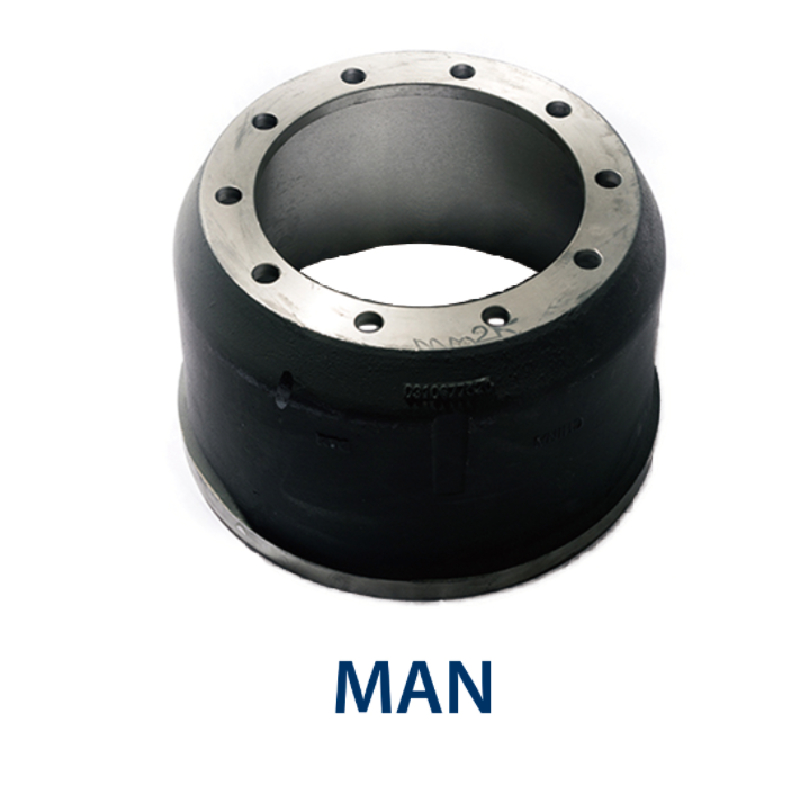авг. . 20, 2024 04:35 Back to list
Understanding the Function and Importance of Brake Drums in Vehicle Safety
What is a Brake Drum?
A brake drum is a crucial component of a vehicle's braking system, particularly in drum brake systems. Understanding the function and significance of brake drums is essential for both vehicle safety and performance.
Structure and Function
A brake drum is typically a cylindrical metal part that houses the brake shoes. It is mounted on the wheel hub and rotates with the wheel. When the driver presses the brake pedal, hydraulic pressure is generated in the brake lines, causing the brake shoes to expand outward against the inner surface of the drum. This contact generates friction, which slows down the wheel, ultimately bringing the vehicle to a stop.
Brake drums are usually made of cast iron or steel, designed to withstand the high temperatures and stress that result from repeated braking. The drum's interior surface is precisely machined to provide an optimal contact surface for the brake shoes, ensuring efficient performance.
Types of Brake Drums
There are two primary types of brake drums solid and vented. Solid brake drums are the simpler version, which can effectively dissipate the heat generated during braking but may not be as efficient in high-performance applications. Vented brake drums, on the other hand, feature internal cooling fins. These fins create airflow through the drum while it rotates, allowing for better heat dissipation, which is particularly beneficial in heavy braking situations often encountered in performance vehicles or trucks.
Advantages of Brake Drums
Brake drums offer several advantages. Firstly, they generally provide more consistent braking performance under heavy loads due to their larger surface area compared to disc brakes. This characteristic makes them particularly suitable for commercial vehicles and trucks that require reliable stopping power.
what is a brake drum

Additionally, the enclosed design of brake drums helps protect the components from dirt and debris, contributing to longer life and less frequent maintenance. They also tend to be less expensive than their disc brake counterparts, making them a cost-effective option for some vehicle manufacturers.
Disadvantages of Brake Drums
Despite their advantages, brake drums also have some downsides. One significant drawback is heat retention. While they are effective for standard braking, brake drums can suffer from brake fade when subjected to extreme conditions. As temperatures rise, the material can expand, leading to reduced friction and effectiveness, which can be dangerous during high-speed driving or in emergency situations.
Furthermore, drum brakes generally have a more complex adjustment system and are heavier than disc brake systems, which can impact the overall weight and handling of the vehicle.
Maintenance and Care
To ensure the longevity and performance of brake drums, regular maintenance is crucial. This includes periodic inspections for wear and tear, checking for warping or cracking, and ensuring that the brake shoes are in good condition. It’s also important to clean the drum's interior to prevent the buildup of debris and dust, which can affect braking performance.
Conclusion
In summary, brake drums are a vital part of many vehicles' braking systems, providing effective stopping power through their robust design and reliable performance. While they have distinct advantages, such as their durability and cost-effectiveness, they also present challenges, particularly regarding heat management. Understanding the role and care of brake drums can help ensure the safety and efficiency of any vehicle. Whether for everyday commuting or heavy-duty applications, the brake drum continues to be a fundamental component of automotive safety technology.
-
Brake Drum Man - High-Quality Drum Brake Drums & Brake Shoes for Reliable Performance
NewsJun.24,2025
-
High-Quality Brake Drum Kamaz – Durable Drum Brake Drum & Brake Shoe Replacement
NewsJun.10,2025
-
High-Quality Brake Drum Liza for Drum Brake Systems - Superior Durability and Performance
NewsJun.10,2025
-
High-Quality Brake Drum Kamaz – Durable Drum Brake Drum & Brake Shoe Solutions
NewsJun.10,2025
-
Durable Kamaz Brake Drums High-Performance Truck Parts
NewsJun.09,2025
-
Premium Brake Drum Maz Kit with Shoes Enhanced Braking
NewsJun.09,2025
